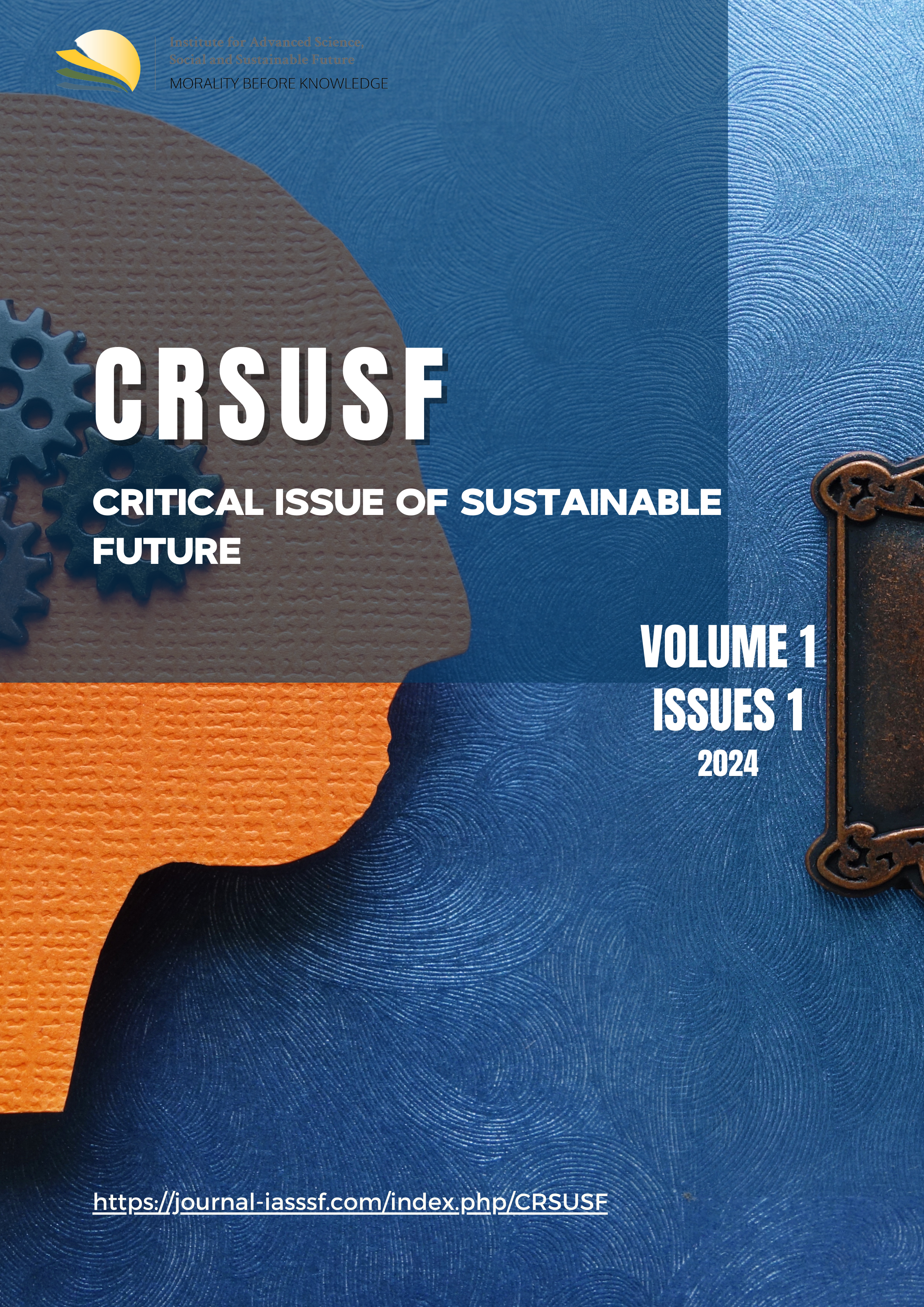Pengaruh tekanan waktu dan perceived value terhadap pembelian impulsif di shopee live pada konsumen skincare di Indonesia: Emotions sebagai moderasi
DOI:
https://doi.org/10.61511/crsusf.v1i1.1041Keywords:
emotions, impulsive buying, live-streaming e-commerce, perceived value, time pressureAbstract
Product sales activities conducted through live-streaming have become a new breakthrough in the context of online shopping. The activity is supported by numerous e-commerce platforms that facilitate live product sales activities by creating a live-streaming feature. This live-streaming product sales process causes time pressures and perceived value for the audience which triggers impulsive buying behavior. This study aims to analyze the influence of time pressure, perceived value, and emotions on consumers’ impulsive buying behavior. This conclusive descriptive cross-sectional study uses the S-O-R theory approach, with the Partial Least Square-Structural Equation Method (PLS-SEM). Data was collected through a survey distributed online to the buyers of skincare products on Shopee Live, aged 18 – 25 years in Indonesia. A total of 280 respondents were successfully collected through surveys using purposive sampling techniques. The results of the study explains that there is a positive influence of time pressure on impulsive buying behavior mediated by perceived value. This study is expected to help businesses and managers in determining product sales strategies during live streaming, specifically for skincare product sellers on Shopee Live.
References
Aminilari, M., & Pakath, R. (2005). Searching for information in a time-pressured setting: experiences with a Text-based and an Image-based decision support system. Decision Support Systems, 41(1), 37–68. https://doi.org/10.1016/j.dss.2004.02.005
Beatty, S. E., & Elizabeth Ferrell, M. (1998). Impulse buying: Modeling its precursors. Journal of Retailing, 74(2), 169–191. https://doi.org/10.1016/S0022-4359(99)80092-X
BPJS Ketenagakerjaan. (2023, November 21). Live streamer, Profesi Baru yang Muncul karena Pergeseran Dunia Digital. BPJS Ketenagakerjaan.
Chen, C.-D., & Ku, E. C. S. (2021). Diversified Online Review Websites as Accelerators for Online Impulsive Buying: The Moderating Effect of Price Dispersion. Journal of Internet Commerce, 20(1), 113–135. https://doi.org/10.1080/15332861.2020.1868227
CNBC Indonesia. (2023a, September 2). Rekor! 1.5 Jam, Omset dr. Richard Lee di Shopee Live Rp 5.5 M. CNBC Indonesia.
CNBC Indonesia. (2023b, September 19). Makin Sengit! TikTok VS Shopee Siapa Jawara Live Shopping? CNBC Indonesia.
Coley, A., & Burgess, B. (2003). Gender differences in cognitive and affective impulse buying. Journal of Fashion Marketing and Management: An International Journal, 7(3), 282–295. https://doi.org/10.1108/13612020310484834
Data Boks. (2021, June 4). Penggunaan E-Commerce Indonesia Tertinggi di Dunia. Databoks.
Dhar, R., & Wertenbroch, K. (2000). Consumer Choice between Hedonic and Utilitarian Goods. Journal of Marketing Research, 37(1), 60–71. https://doi.org/10.1509/jmkr.37.1.60.18718
Handy, T. C., Smilek, D., Geiger, L., Liu, C., & Schooler, J. W. (2010). ERP Evidence for Rapid Hedonic Evaluation of Logos. Journal of Cognitive Neuroscience, 22(1), 124–138. https://doi.org/10.1162/jocn.2008.21180
Högberg, J., Ramberg, M. O., Gustafsson, A., & Wästlund, E. (2019). Creating brand engagement through in-store gamified customer experiences. Journal of Retailing and Consumer Services, 50, 122–130. https://doi.org/10.1016/j.jretconser.2019.05.006
Inman, J. J., & McAlister, L. (1994). Do Coupon Expiration Dates Affect Consumer Behavior? Journal of Marketing Research, 31(3), 423. https://doi.org/10.2307/3152229
Kata Data. (2022, December 5). Makin Meroket, Pendapatan Produk Kecantikan dan Perawatan Diri di RI Capai Rp111,83 Triliun pada 202. Katadata.
Kata Data. (2023a, June 9). Riset: Live Streaming Shopee Ungguli TikTok, Lazada, Tokopedia. Kata Data.
Kominfo. (2020, October 13). Transaksi E-Commerce Naik 400%, Kominfo Latih 2.500 UMKM Jualan Online. Kominfo.
Liu, X. S., Shi, Y., Xue, N. I., & Shen, H. (2022). The impact of time pressure on impulsive buying: The moderating role of consumption type. Tourism Management, 91, 104505. https://doi.org/10.1016/j.tourman.2022.104505
Lo, P.-S., Dwivedi, Y. K., Wei-Han Tan, G., Ooi, K.-B., Cheng-Xi Aw, E., & Metri, B. (2022). Why do consumers buy impulsively during live streaming? A deep learning-based dual-stage SEM-ANN analysis. Journal of Business Research, 147, 325–337. https://doi.org/10.1016/j.jbusres.2022.04.013
Malhotra, N. K., Nunan, D., & Birks, D. F. (2020). Marketing research: An applied approach. Marketing research: an applied orientation. 6th edittion. Pearson.
O’Cass, A., & McEwen, H. (2004). Exploring consumer status and conspicuous consumption. Journal of Consumer Behaviour, 4(1), 25–39. https://doi.org/10.1002/cb.155
Rook, D. W., & Fisher, R. J. (1995). Normative Influences on Impulsive Buying Behavior. Journal of Consumer Research, 22(3), 305. https://doi.org/10.1086/209452
Sinha, I., & Smith, M. (2000). Consumers’ perceptions of promotional framing of price. Psychology and Marketing.
So, J., Kuang, K., & Cho, H. (2016). Reexamining Fear Appeal Models from Cognitive Appraisal Theory and Functional Emotion Theory Perspectives. Communication Monographs, 83(1), 120–144. https://doi.org/10.1080/03637751.2015.1044257
Sohn, H.-K., & Lee, T. J. (2017). Tourists’ impulse buying behavior at duty-free shops: the moderating effects of time pressure and shopping involvement. Journal of Travel & Tourism Marketing, 34(3), 341–356. https://doi.org/10.1080/10548408.2016.1170650
Stern, H. (1962). The Significance of Impulse Buying Today. Journal of Marketing, 26(2), 59–62. https://doi.org/10.1177/002224296202600212
Sun, B., Zhang, Y., & Zheng, L. (2023). Relationship between time pressure and consumers’ impulsive buying—Role of perceived value and emotions. Heliyon, 9(12), e23185. https://doi.org/10.1016/j.heliyon.2023.e23185
Teangsompong, T., & Sawangproh, W. (2024). Understanding online purchase intention of plant-based foods: Exploring causal factors and moderating role of self-efficacy within the SOR theory. Heliyon, 10(10), e30785. https://doi.org/10.1016/j.heliyon.2024.e30785
Verhagen, T., & van Dolen, W. (2011). The influence of online store beliefs on consumer online impulse buying: A model and empirical application. Information & Management, 48(8), 320–327. https://doi.org/10.1016/j.im.2011.08.001
Verplanken, B., & Herabadi, A. (2001). Individual differences in impulse buying tendency: feeling and no thinking. European Journal of Personality, 15(1_suppl), S71–S83. https://doi.org/10.1002/per.423
Wood, R., & Bandura, A. (1989). Social Cognitive Theory of Organizational Management. Academy of Management Review, 14(3), 361–384. https://doi.org/10.5465/amr.1989.4279067
Zeithaml, V. A. (1988). Consumer Perceptions of Price, Quality, and Value: A Means-End Model and Synthesis of Evidence. Journal of Marketing, 52(3), 2–22. https://doi.org/10.1177/002224298805200302
Zhang, X., Liu, Y., Qin, Z., Ye, Z., & Meng, F. (2023). Understanding the role of social media usage and health self-efficacy in the processing of COVID-19 rumors: A SOR perspective. Data and Information Management, 7(2), 100043. https://doi.org/10.1016/j.dim.2023.100043
Downloads
Published
Issue
Section
Citation Check
License
Copyright (c) 2024 Brigitta Efinia Atfiko, Nissa Ghulma Ratnasari

This work is licensed under a Creative Commons Attribution 4.0 International License.













